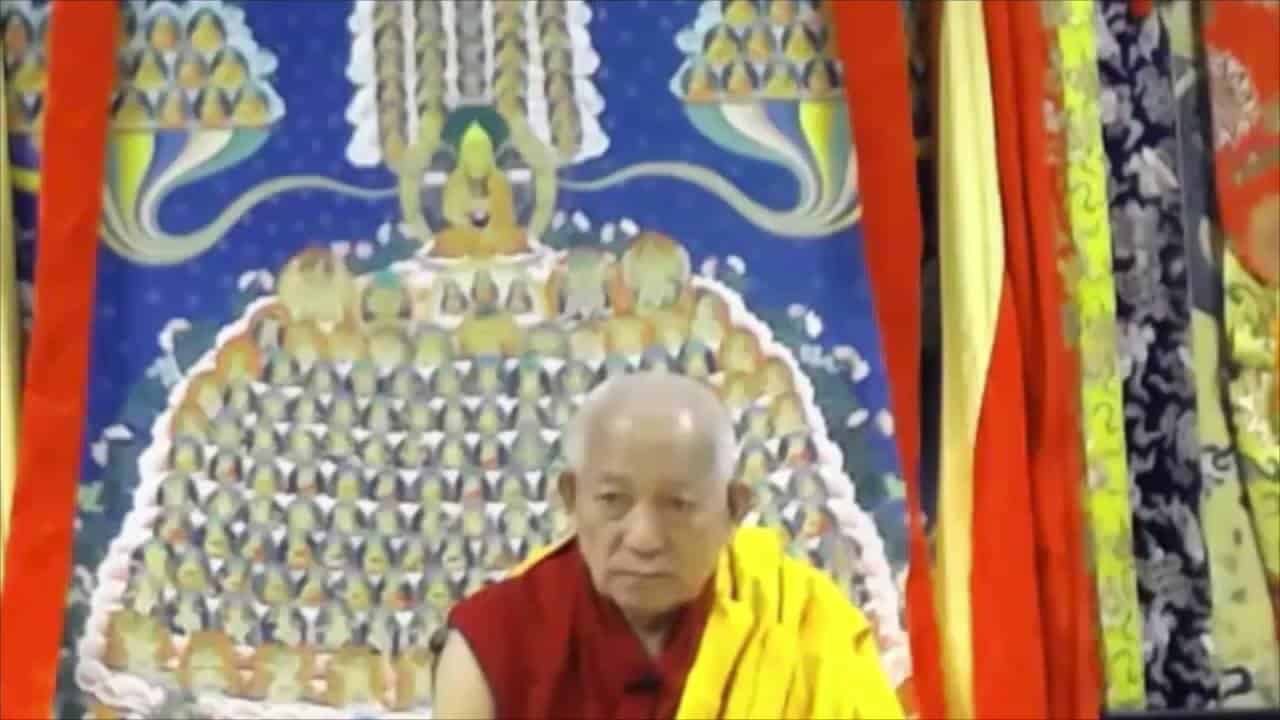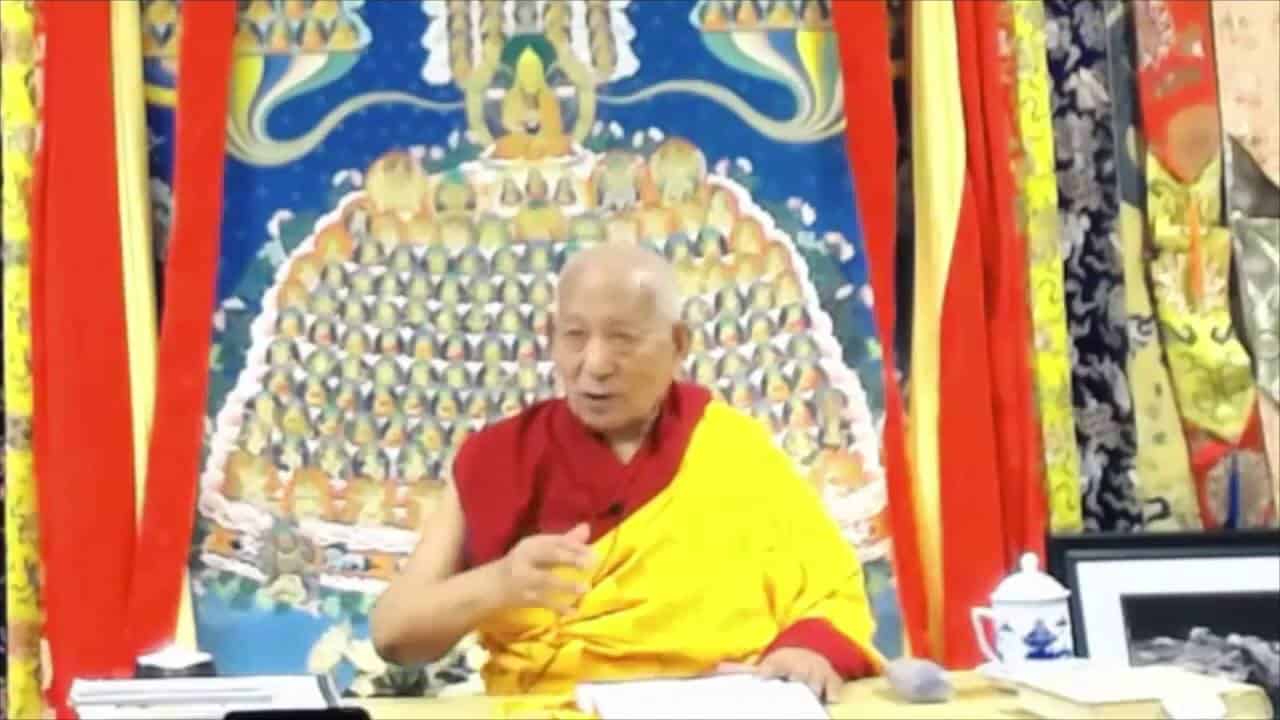Chapter 12: Verses 286-295
Part of a series of teachings on Aryadeva's400 Stanzas on the Middle Way given on an annual basis at Sravasti Abbey by Geshe Yeshe Thabkhe beginning in 2013.
- We should never lapse from the view that understands emptiness
- Why the teachings on emptiness should be given only to those whose minds are prepared to hear them
- Why the Buddha sometimes taught that the self exists
- Teaching the Dharma according to students’ dispositions
- There is no other way to attain liberation from cyclic existence but to understand emptiness
- The profound teachings on emptiness are not taught for the sake of debate but as a means to attain liberation
- Why aryas do not fear emptiness
- Having compassion for those with wrong views
- Why people mostly follow non-Buddhist teachings
- Those who seek liberation should avoid wrong practices and asceticism
Geshe Yeshe Thabkhe
Geshe Yeshe Thabkhe was born in 1930 in Lhokha, Central Tibet and became a monk at the age of 13. After completing his studies at Drepung Loseling Monastery in 1969, he was awarded Geshe Lharampa, the highest degree in the Geluk School of Tibetan Buddhism. He is an emeritus professor at the Central Institute of Higher Tibetan Studies and an eminent scholar of both Madhyamaka and Indian Buddhist studies. His works include Hindi translations of The Essence of Good Explanation of Definitive and Interpretable Meanings by Lama Tsongkhapa and Kamalasila's commentary on the Rice Seedling Sutra. His own commentary, The Rice Seedling Sutra: Buddha’s Teachings on Dependent Arising, was translated into English by Joshua and Diana Cutler and published by Wisdom Publications. Geshela has facilitated many research works, such as a complete translation of Tsongkhapa’s The Great Treatise on the Stages of the Path to Enlightenment, a major project undertaken by the Tibetan Buddhist Learning Center in New Jersey where he teaches regularly.


